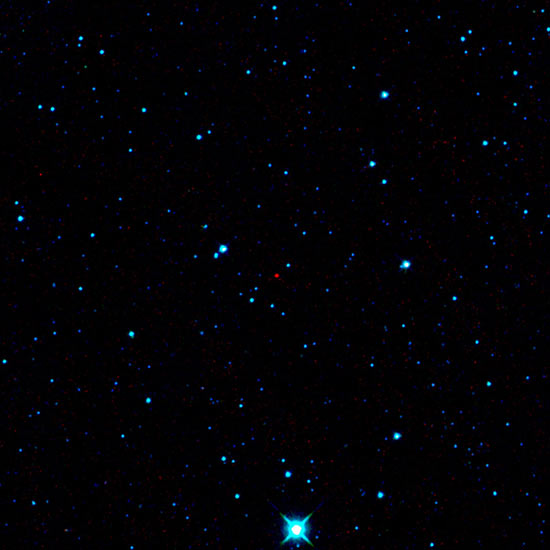NASA Sky-Mapping Spacecraft Spots First New Asteroid

NASA's latest sky-mapping space telescope has found anasteroid never-before-seen from Earth, the first of hundreds of new objects thetelescope is expected to find.
The near-Earth object, designated 2010 AB78, wasdiscovered by NASA's Wide-fieldInfrared Survey Explorer, or WISE, on Jan. 12. The space rockdoesn't appear to pose any threat to Earth, NASA officials said.
The newfound asteroid is currently about 98 million miles(158 million km) from Earth and has an estimated diameter of 0.6 miles (1 km).
The rock comes as close to the sun as Earth does, butbecause it circles the sun in an elliptical orbit tilted with respect to theEarth's orbital plane, the asteroid isn't thought to come near enough to ourplanet to pose a hazard. Scientists will monitor the asteroid though to makesure it doesn't pose an impact threat.
The WISE mission's software was able to pick out theobject moving against a background of stationary stars. Researchers confirmedthe object's identity with the University of Hawaii's 2.2-meter visible-lighttelescope near the summit of Mauna Kea.
WISE is expected to find about 100 to 1,000 previouslyundiscovered asteroids in the belt between Mars and Jupiter, as well as hundredsof new near-Earth asteroids during its all-sky survey, which began on Jan. 14.
A newreport issued last week found that NASA's efforts at findingnear-Earth asteroids that could potentially pose a threat to Earth are notsufficient.
Breaking space news, the latest updates on rocket launches, skywatching events and more!
NASA's asteroid and near-Earth object experts have saidthat the agency has found about 85 percent of the largest nearby asteroids,ones that are a half-mile (1 km) wide or larger. But only 15 percent of the460-foot wide asteroids near Earth have been discovered and tracked to date,and just 5 percent of nearby space rocks about 164 feet (50 meters) across havebeen found.
WISE will also spot millions of new stars and galaxies asit scans the sky in the infraredwavelengths every 11 seconds as it orbits the Earth. Thespacecraft launched from Vandenberg Air Force Base in California in December2009.
? Video? Getting WISE to Brown Dwarfs
? EarthNot Properly Protected from Asteroids
? Images:The Universe in Infrared
Join our Space Forums to keep talking space on the latest missions, night sky and more! And if you have a news tip, correction or comment, let us know at: community@space.com.

Space.com is the premier source of space exploration, innovation and astronomy news, chronicling (and celebrating) humanity's ongoing expansion across the final frontier. Originally founded in 1999, Space.com is, and always has been, the passion of writers and editors who are space fans and also trained journalists. Our current news team consists of Editor-in-Chief Tariq Malik; Editor Hanneke Weitering, Senior Space Writer Mike Wall; Senior Writer Meghan Bartels; Senior Writer Chelsea Gohd, Senior Writer Tereza Pultarova and Staff Writer Alexander Cox, focusing on e-commerce. Senior Producer Steve Spaleta oversees our space videos, with Diana Whitcroft as our Social Media Editor.
